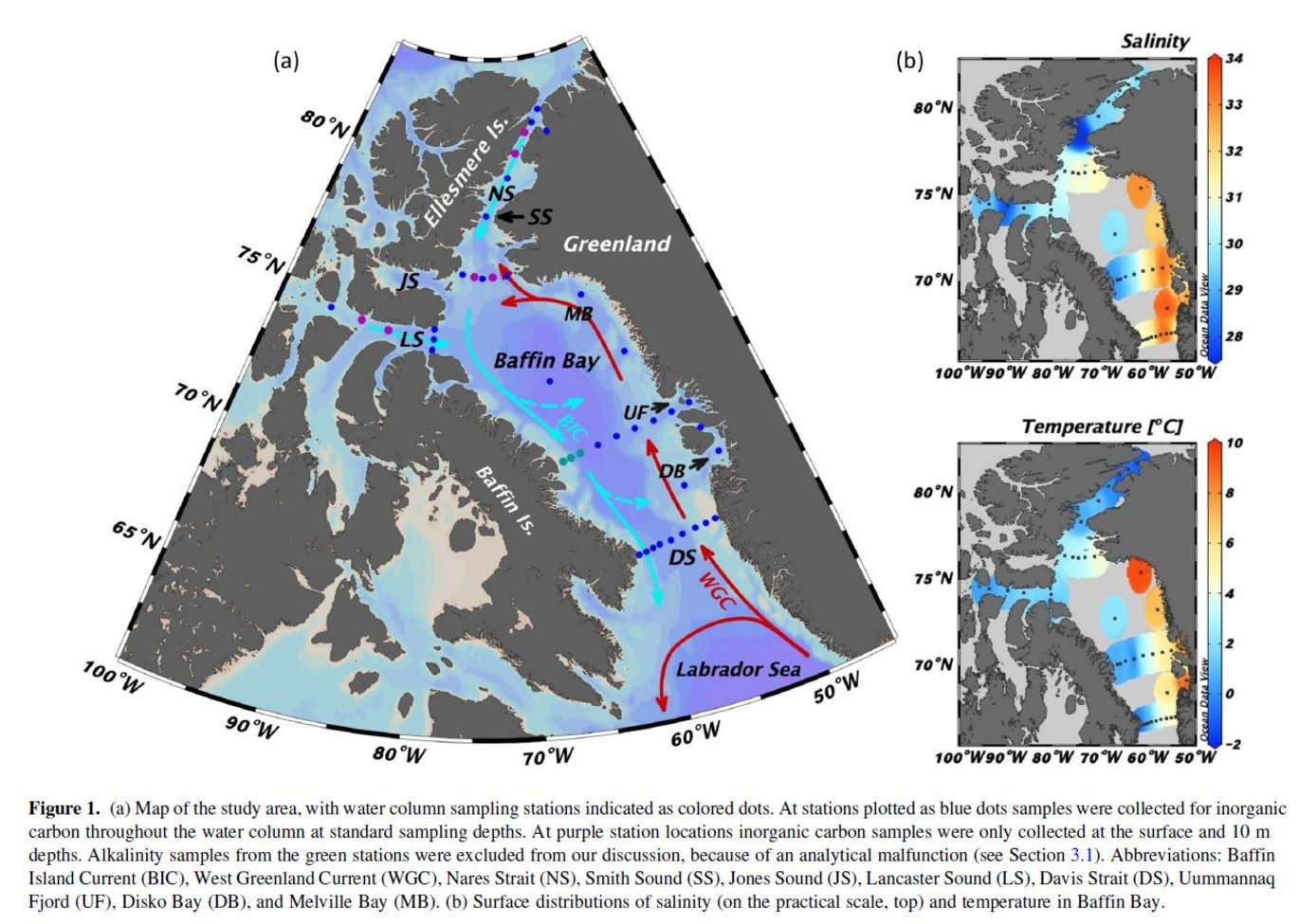Unraveling the biogeochemical drivers of aragonite saturation state in Baffin Bay: Insights from the west Greenland continental shelf.
New publication by Tonya M. Burgers, Kumiko Azetsu‐Scott , Paul G. Myers , Brent G. T. Else, Lisa A. Miller, Søren Rysgaard, Wayne Chan, Jean‐Éric Tremblay, and Tim Papakyriakou

Abstract:
This study investigates the biogeochemical drivers of aragonite saturation state (ΩAr) in Baffin Bay, with a focus on the relatively undersampled west Greenland shelf. Our findings reveal two main depthdependant processes controlling the spatial distribution of ΩAr in Baffin Bay; within the upper 200 m, lower ΩAr coincides with increasing fractions of Arctic‐outflow waters, while below 200 m organic matter respiration decreases ΩAr. A temporal analysis comparing historical measurements from 1997 and 2004 with our 2019 data set reveals a significant decrease in the ΩAr of Arctic‐outflow waters, coinciding with reduced total alkalinity (TA). However, no discernible anthropogenic ocean acidification signal is identified. Significant Arctic water fractions (20%–40%) are found to be present on the west Greenland shelf, associated with reduced TA and ΩAr. A numerical modeling simulation incorporating a passive tracer demonstrates that periodic changes in wind direction lead to a switch from onshore to offshore Ekman transport along the Baffin Island current, transporting Arctic waters toward the west Greenland shelf. This challenges the conventional understanding of Baffin Bay's circulation and underscores the need for further research on the region's physical oceanography. Based on salinity‐TA relationships, surface waters on the west Greenland shelf have a significantly lower meteoric TA end‐member compared to waters of the Baffin Island Current in western Baffin Bay. The low eastern TA freshwater end‐member agrees well with recent glacial meltwater TA measurements, suggesting that glacial meltwater is the main freshwater source to surface waters on the west Greenland shelf.
https://doi.org/10.1029/2024JC021122
